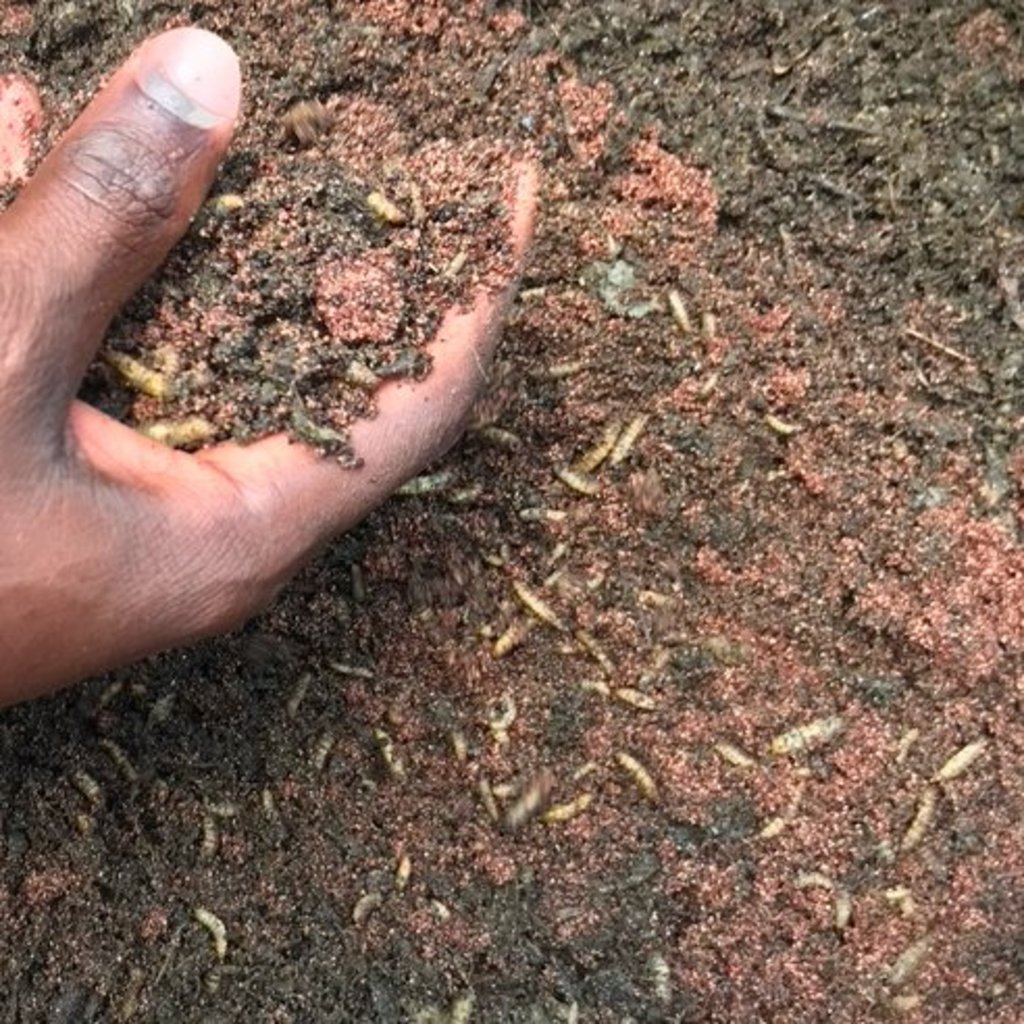Use of residues from black soldier fly larvae rearing
What do we see on the project photo?
Black soldier fly larvae are feeding on organic leftovers from food production. Once the larvae are mature, they can be separated from the residues. Afterwards they can be further processed or directly fed to animals. The residues can serve as a valuable fertilizer to promote plant growth.
How would you explain to a child what the project is doing?
The overarching RUNRES project promotes a certain way of producing food. Leftovers that arise throughout the whole development of a food product are converted into something that can be used to produce new food. Using the larvae from the black soldier fly is one way of producing food again; the larvae can convert leftovers into animal feed and fertilizer, which are important foundations for food production. In our project, we studied the effect of this fertilizer on the fertility and life in the soil where plants were grown.
What is the project’s main objective?
The main objective of the RUNRES project is to promote circular agricultural production in African city regions. The main objective of our study was to explore in which way residues from black soldier fly rearing impact the soil microbiome and contribute to soil fertility.
Why is the project important?
In the past, science has mainly focused on the “main” product of black soldier fly larvae rearing, which are the larvae used for actual animal feed. However, significant amounts of residue are produced in the process. If we really want this technology to be sustainable, we should reintroduce the residues into the food system as well. Creating more knowledge of the impact of residues from black soldier fly larvae rearing is important in establishing guidelines for farmers considering using them as a plant fertilizer.
What has been the most positive moment during the project?
The most exciting moments were related to the presentation and the discussion of results with people who work in black soldier fly rearing or agriculture.
What have been the biggest challenges encountered in the project?
The study took place during an earlier phase of the COVID-19 pandemic, which complicated workflows.
Which is the most important lesson learnt from the project?
Residues from black soldier fly rearing can certainly significantly impact the soil microbiome and enhance soil fertility, but more studies are needed to test what these impacts are in different environments. Some current claims regarding the application of residues from black soldier fly rearing lack scientific evidence.
About the project
Title:
Influence of residues from black soldier fly larvae rearing on the plant-associated microbiome (associated with the RUNRES project)
Contact:
Adrian Fuhrmann, Researcher
Duration:
01/2021 - 07/2021
Funding institutions:
Swiss Agency for Development and Cooperation (funds the RUNRES project)
Implementing institution:
ETH Zurich, IITA, Maggot farm LTD, COPED LTD
Links to further information:
Article in "Frontiers in Microbiology"
RUNRES Project
Research partner: COPED LTD
Research partner: Maggot Farm
Reserach partner: IITA
See also:
Winners of SFIAR Award 2022

